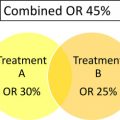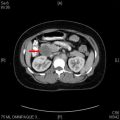
The issue begins with a comprehensive overview of the evolving histologic classification of neuroendocrine tumors by Dr Klimstra. Drs Vinik and Chaya next describe the clinical presentation and diagnosis of neuroendocrine tumors, with a focus on imaging and biomarkers. The subsequent articles focus on the management of neuroendocrine tumors and are divided according to primary site. The surgical management of gastrointestinal neuroendocrine tumors is discussed by Drs Farley and Pommier, and systemic treatment options are covered by Drs Mulvey and Bergsland. Drs Litvak and Pietanza provide a comprehensive discussion of the biology and management of lung and thymic neuroendocrine tumors. Dr Clancy provides an overview of surgical management of pancreatic neuroendocrine tumors, and Drs Raj and Reidy-Lagunes examine systemic therapy of this disease. Dr Fishbein reviews the diagnostic approach, genetics, and management of pheochromocytoma and paraganglioma. In the following article, Dr Eads discusses the management of poorly differentiated neuroendocrine tumors.
In addition to providing disease-specific reviews, this issue also includes specific articles focused on evolving classes of therapy of particular importance for patients with neuroendocrine tumors. Drs Narayanan and Kunz provide an overview of existing and novel somatostatin analogues and their role in controlling both hormone secretion and tumor growth. Drs Kwekkeboom and Krenning provide an in-depth discussion of the use of peptide receptor radiotherapy using radiolabeled somatostatin analogues for the treatment of neuroendocrine tumors. Dr Kennedy discusses hepatic-directed therapies, including various hepatic artery embolization approaches, for neuroendocrine tumor liver metastases. The final article of the issue by Drs Halperin and Yao focuses on the unique challenges that must be taken into consideration when designing clinical trials for neuroendocrine tumors, including patient heterogeneity and appropriate response and endpoint assessment.
It is our hope that this issue of Hematology/Oncology Clinics of North America provides readers with an overview of the current treatment landscape for neuroendocrine tumors and serves as a useful reference as we continue to advance our understanding of this disease.
Stay updated, free articles. Join our Telegram channel

Full access? Get Clinical Tree






